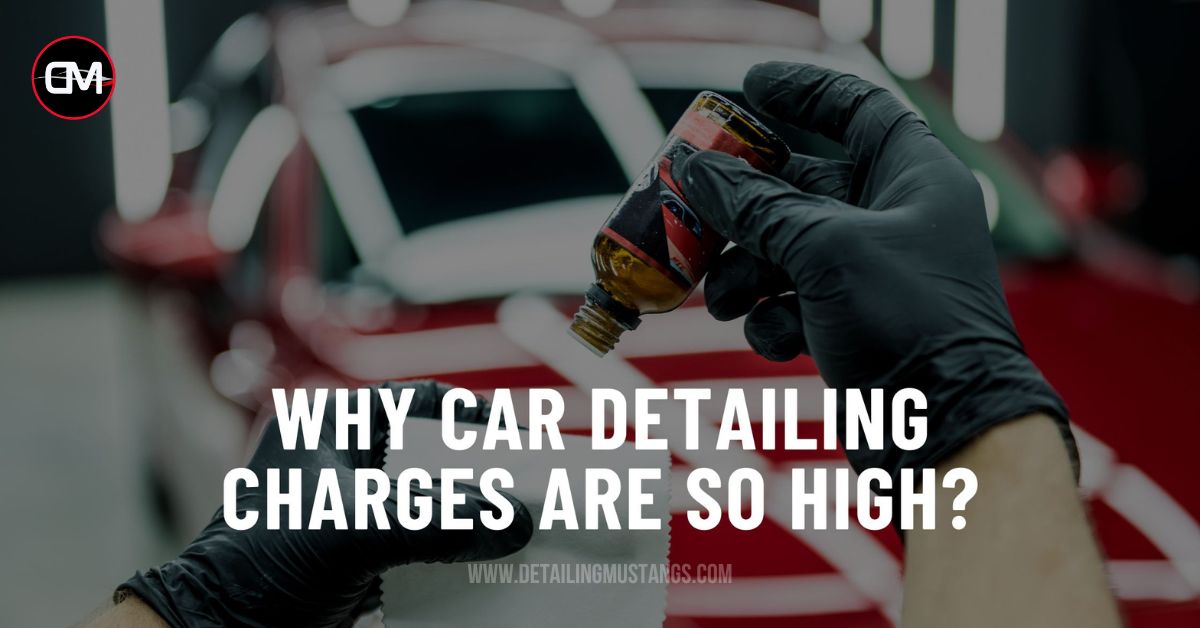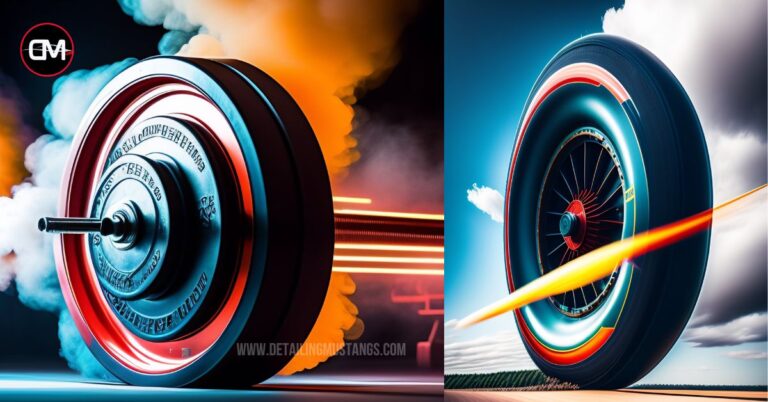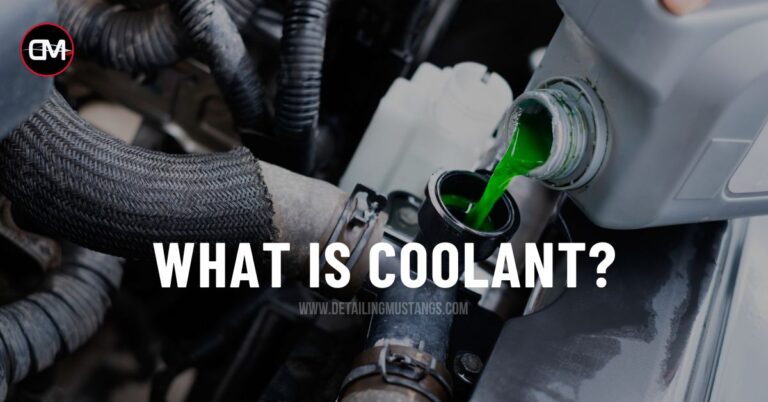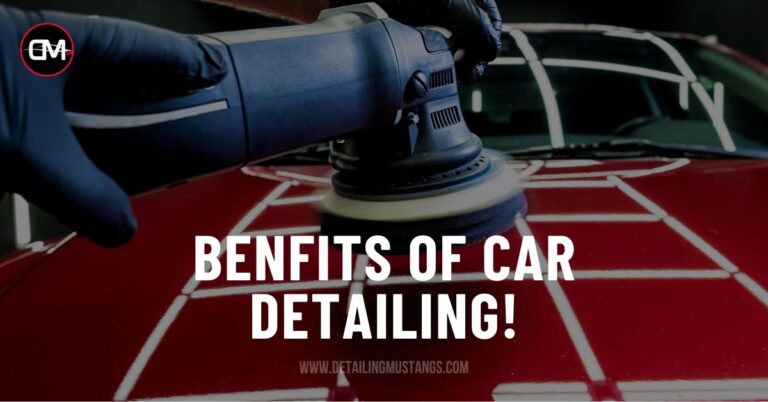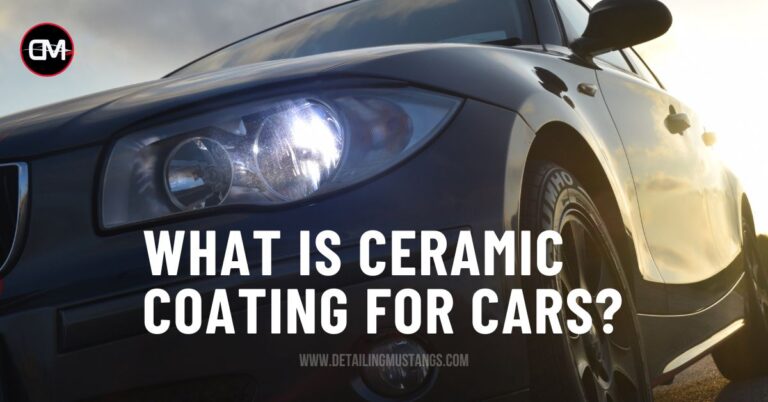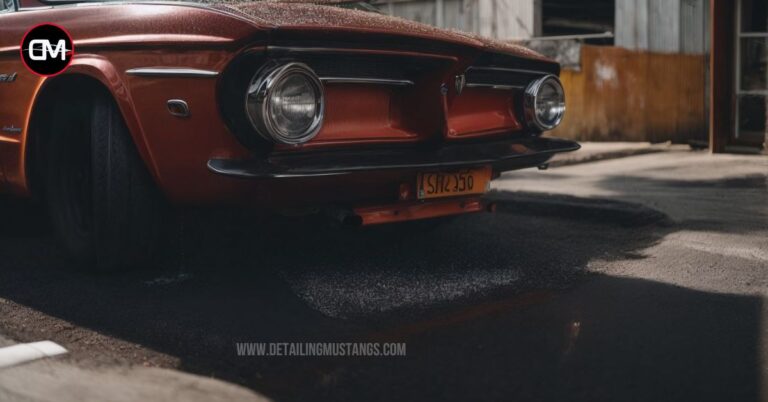Decoding the Costs: Understanding Why Car Detailing Charges Are So High
Introduction:
Auto detailing is more than just a simple car wash; it’s a meticulous process that involves cleaning, restoration, and finishing of a vehicle to produce a polished and pristine appearance. As car owners become increasingly discerning about the aesthetics and maintenance of their vehicles, the demand for professional detailing services has surged.
In recent years, we’ve witnessed a notable rise in the popularity of these services, with car enthusiasts and everyday drivers alike recognizing the value of a well-detailed vehicle. However, with the growing trend of seeking professional detailing, many individuals may find themselves questioning the seemingly high charges associated with these services.
This prompts us to delve deeper into the factors that contribute to the pricing structure of auto detailing. What goes on behind the scenes that justifies the costs? Why do detailing charges often appear to be on the higher side?
In this exploration, we aim to unravel the mysteries behind the pricing of auto detailing services, shedding light on the intricate processes, specialized skills, and investments that make professional detailing a valuable and, at times, seemingly costly service.
The Art of Auto Detailing:
Skill and Expertise:
1. Specialized Skills: Professional auto detailing is an art that requires a unique set of skills. Detailers are not just cleaning a vehicle; they are meticulously enhancing its appearance. Skilled detailers possess a keen eye for detail, understanding the nuances of different surfaces and materials in a vehicle. They are trained to identify imperfections, scratches, swirls, and paint defects that may go unnoticed by the untrained eye.
2. Problem Identification and Resolution: Experienced detailers go beyond the surface level. They can identify and address a wide range of issues affecting a vehicle’s appearance. Whether it’s paint oxidation, water spots, or interior stains, these professionals have the knowledge and expertise to choose the right techniques and products for each specific problem. This level of expertise ensures that the detailing process not only enhances the vehicle’s aesthetics but also addresses underlying issues that could worsen over time.
Quality of Materials:
3. Importance of High-Quality Products: Using high-quality cleaning agents, waxes, polishes, and detailing products is crucial in achieving superior results. Professional detailers understand the significance of investing in top-tier products that are specifically formulated for different surfaces of a vehicle. These products are designed to be effective yet gentle, ensuring that the detailing process enhances the appearance without causing damage.
4. Contribution to Better Results: Premium detailing products contribute to better outcomes in several ways. They are often more effective in removing contaminants, restoring shine, and protecting surfaces. High-quality waxes and polishes create a more durable and longer-lasting finish, providing not only immediate aesthetic benefits but also prolonged protection against environmental factors.
5. Long-Lasting Effects:
While it may seem cost-effective to use cheaper products, the longevity of the detailing results is compromised. High-quality products contribute to longer-lasting effects, meaning that the vehicle will maintain its enhanced appearance for an extended period. This, in turn, reduces the frequency at which detailing services are required, offering a cost-effective and sustainable solution for car owners in the long run.
In essence, the combination of specialized skills and the use of premium materials transforms auto detailing from a basic cleaning service to a meticulous art form, ensuring that each vehicle receives the attention it deserves for optimal aesthetic enhancement and long-term preservation.
Time-Consuming Nature:
Attention to Detail:
1. Meticulous Inspection: Auto detailing is distinguished by its unwavering commitment to perfection. Detailers undertake a meticulous inspection of every inch of the vehicle, scrutinizing the paintwork, interior, wheels, and even the smallest crevices. This attention to detail allows them to identify imperfections, stains, and scratches that might escape casual observation. The thorough inspection serves as the foundation for a customized detailing plan tailored to address the unique needs of each vehicle.
2. Step-by-Step Process: Detailing is a multi-step process that involves a carefully planned sequence of tasks. Each step is crucial for achieving optimal results. The process typically includes washing and decontaminating the exterior, claying to remove embedded contaminants, paint correction to address imperfections, polishing for enhanced shine, and protective coatings for long-term preservation. Interior detailing involves cleaning, conditioning, and protecting various surfaces. The step-by-step approach ensures that no aspect of the vehicle is overlooked, contributing to the comprehensive nature of professional detailing.
Labor-Intensive Procedures:
Time and Effort Investment
3. Paint Correction: One of the labor-intensive aspects of detailing is paint correction. This involves removing swirl marks, scratches, and other imperfections in the vehicle’s paint. Achieving a flawless finish requires time-consuming processes such as compounding, polishing, and refining. Detailers often spend hours meticulously working on small sections of the vehicle to ensure that the paintwork is restored to its optimal condition.
4.Clay Bar Treatment: The clay bar treatment, which is essential for removing contaminants from the paint surface, is another time-consuming task. Detailers need to methodically clay each panel of the vehicle to ensure a smooth and contaminant-free surface. This process is crucial for achieving a clean canvas before applying protective coatings.
5. Interior Detailing: Interior detailing involves deep cleaning and conditioning of various surfaces, including upholstery, carpets, dashboard, and trim. Detailers invest time in carefully cleaning and protecting each component to ensure a pristine and refreshed interior. Attention to detail in interior detailing also extends to areas that are often overlooked, such as air vents, buttons, and seams.
Contribution to Overall Cost:
6. Labor-Intensive Processes Impacting Cost: The time and effort invested in these labor-intensive procedures directly contribute to the overall cost of professional detailing services. Skilled detailing professionals command fair compensation for their expertise and the extensive hours they devote to transforming a vehicle. The intricacies of the detailing process, from the initial inspection to the final touches, ensure a level of quality that justifies the cost.
7. Specialized Expertise Commands Value: Detailing is not just a service; it’s a skill-intensive profession that demands specialized expertise. The labor-intensive nature of detailing tasks, coupled with the need for precision and thoroughness, adds significant value to the service. While the charges may seem high, they reflect the dedication, expertise, and time invested by detailing professionals to deliver a superior outcome that exceeds the expectations of car owners.
In essence, the time-consuming and labor-intensive nature of professional detailing contributes to the high charges, underscoring the commitment to delivering exceptional results that go beyond basic cleaning and maintenance.
Equipment and Technology:
Specialized Equipment:
1. Advanced Tools: Professional auto detailing relies on a range of specialized tools designed to address specific aspects of vehicle appearance. High-quality vacuum cleaners, steam cleaners, and pressure washers are employed for interior cleaning. Advanced polisher machines, with various pads and attachments, facilitate paint correction and polishing. Specialized brushes, detailing clay, and applicators are used for intricate areas. These tools are not only designed for efficiency but also to minimize the risk of damage to the vehicle’s surfaces.
2. Cutting-Edge Equipment: Cutting-edge equipment, such as dual-action polishers, infrared curing lamps, and precision measuring devices, plays a pivotal role in achieving superior results. Dual-action polishers, for instance, provide controlled and efficient polishing, reducing the likelihood of swirls and holograms on the paint surface. Infrared curing lamps accelerate the curing process of protective coatings, ensuring a durable and resilient finish.
3. Paint Thickness Gauges: Detailers often use paint thickness gauges to measure the thickness of the paint layers. This helps in determining the extent of paint correction that can be safely performed without risking damage to the vehicle’s finish.
Contribution to Efficiency and Better Outcomes:
4. Efficiency in Detailing Processes: The use of advanced tools contributes to the efficiency of the detailing process. These tools are designed to streamline tasks, reducing the time required for each step. For example, machine polishers can achieve paint correction more efficiently than manual methods, and high-powered vacuums can extract dirt and debris from the interior more effectively. This efficiency not only saves time but also enhances the overall quality of the detailing job.
5. Precision and Consistency: Specialized equipment allows detailers to work with precision and consistency. This is particularly important in tasks like paint correction, where even pressure and controlled movements are critical. Consistency in the application of detailing products, such as coatings and sealants, is crucial for achieving uniform protection and appearance enhancement across the entire vehicle.
Continuous Technological Advancements:
Investment in Technological Advancements:
6. Keeping Pace with Innovation: Detailing businesses recognize the importance of staying abreast of the latest technological advancements in the industry. This involves investing in new equipment, adopting innovative techniques, and incorporating emerging technologies into their detailing processes. Detailers who embrace advancements demonstrate a commitment to providing clients with state-of-the-art services.
7. Training and Skill Development: Staying updated with technology also involves ongoing training for detailing professionals. This ensures that they are well-versed in the use of new tools and equipment, optimizing their effectiveness and maintaining the highest standards of service.
Impact on Quality of Detailing Services:
8. Precision and Accuracy: Technology enhances the precision and accuracy of detailing services. Advanced equipment allows for more controlled and targeted application of products, reducing the likelihood of errors. This precision is particularly crucial in tasks like paint correction, where a small miscalculation can affect the vehicle’s appearance.
9. Enhanced Customer Experience: The integration of technology into detailing services enhances the overall customer experience. Clients appreciate the use of advanced equipment as it reflects a commitment to quality and professionalism. Additionally, the outcomes achieved through technological advancements often surpass traditional detailing methods in terms of durability and visual appeal.
In conclusion, the use of specialized equipment and continuous investment in technological advancements contribute significantly to the efficiency, precision, and overall quality of professional auto detailing services. The adoption of cutting-edge tools reflects a commitment to delivering superior outcomes and staying at the forefront of an evolving industry.
Overheads and Business Costs:
Business Expenses:
1. Rent and Utilities: Detailing businesses typically operate from a physical location, whether it’s a standalone facility, a shared workspace, or a mobile unit. Rent and utilities, including electricity, water, and heating or cooling systems, constitute significant overheads. The location and facilities chosen by the business directly impact these costs. A prime and well-equipped facility may contribute to higher rent but can enhance the overall customer experience.
2. Insurance: Insurance is a crucial component of business expenses. Detailing businesses need various insurance coverages to protect themselves, their employees, and their clients. This includes general liability insurance to cover accidents or injuries that may occur during the detailing process, as well as property insurance to protect against damage or theft of equipment and supplies.
3. Licensing and Permits: To operate legally, detailing businesses must acquire the necessary licenses and permits. These often come with associated fees and renewals, contributing to the overall business expenses. Compliance with local regulations ensures that the business operates within legal frameworks and maintains a reputable standing in the industry.
4. Equipment and Supplies: Investment in high-quality detailing equipment and supplies is essential for providing top-notch services. This includes purchasing or regularly upgrading detailing tools, cleaning agents, waxes, polishes, protective coatings, and other consumables. Quality products contribute to the overall excellence of the detailing service but come at a cost.
5. Marketing and Advertising: To attract and retain customers, detailing businesses invest in marketing and advertising efforts. This includes online and offline promotions, creating a professional website, and potentially engaging in social media marketing. These expenses are essential for building brand awareness and attracting a steady stream of clients.
Contribution to Pricing Structure:
6. Cost Recovery: Detailing businesses incorporate these overheads into their pricing structure to recover the costs associated with running a professional and legally compliant operation. The fees charged for services need to cover not only the direct costs of labor and materials but also contribute to meeting ongoing operational expenses.
7. Quality Assurance: Investing in a well-maintained facility, high-quality equipment, and professional staff contributes to the overall quality assurance of the detailing service. Clients are more likely to pay higher prices when they perceive that the business is committed to excellence, safety, and a positive customer experience.
8. Business Sustainability: Charging prices that cover overheads ensures the sustainability of the detailing business. Without adequate revenue to cover expenses, a business may struggle to maintain operations, leading to a decline in service quality and, ultimately, potential closure.
Insurance and Liability:
Importance of Insurance Coverage:
9. Protection Against Accidents: Detailing involves working with vehicles, equipment, and potentially hazardous substances. Accidents can happen, and having insurance coverage protects the business from potential financial liabilities arising from accidents or injuries that occur on the premises or during the detailing process.
10. Property Protection: Insurance coverage is crucial for protecting the business’s property, including equipment and supplies. In the event of theft, vandalism, fire, or other unforeseen events, insurance provides a safety net to replace or repair damaged items, preventing significant financial setbacks.
Liability Concerns and Pricing:
11. Risk Management: Liability concerns in detailing include the risk of damage to a customer’s vehicle during the detailing process. Whether it’s a scratch during paint correction or an accidental spill in the interior, these liabilities can result in costly repairs. Insurance helps mitigate these risks by covering the financial consequences, allowing the business to operate with confidence.
12. Pricing Reflecting Risk: The cost of insurance directly impacts the overall pricing structure. Detailing businesses factor in insurance premiums, deductibles, and the potential costs of liability claims when determining the prices for their services. Higher-risk operations may necessitate higher insurance coverage, contributing to increased pricing to ensure adequate risk management.
13. Professionalism and Credibility: Having insurance not only protects the business but also enhances its professionalism and credibility in the eyes of customers. Clients are more likely to choose a detailing service that demonstrates responsibility and accountability through proper insurance coverage, even if it means slightly higher prices.
In summary, detailing businesses face various overheads, including rent, utilities, insurance, licensing, and equipment costs. These expenses contribute to the pricing structure to ensure the recovery of costs, quality assurance, business sustainability, and the ability to manage risks associated with the detailing process. Insurance plays a crucial role in protecting the business and managing liability concerns, impacting the overall pricing strategy while enhancing professionalism and credibility.
Conclusion
In conclusion, the higher charges associated with professional auto detailing are justified by a combination of factors. The specialized skills, high-quality materials, time-consuming nature, advanced equipment, and continuous technological advancements contribute to the overall value of the service.
Additionally, business overheads and insurance costs ensure professionalism, credibility, and accountability. While the expenses may seem significant, they reflect the commitment to excellence, quality, and the long-term preservation of a vehicle.
Ultimately, the costs are an investment in the meticulous care, skill, and superior outcomes that professional detailing provides, making it a valuable service for car owners who appreciate the importance of maintaining and enhancing their vehicles.

